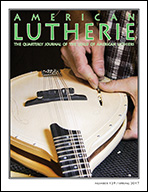|
||||
 |
Letters to the Editor An electric guitar by pioneering designer Doc Kauffman uses a speaker cone in place of a resophonic cone. An ergonomic acoustic guitar design uses a faceted back. |
|||
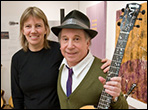 |
Let’s Catch Up With Linda Manzer by Cyndy Burton The prolific maker of high-end flattop and archtop guitars talks about her mentors Jean Larrivee and Jimmy D’Aquisto, the lutherie biz, her design collaborations with guitarist Pat Metheny, and a recent art project in cooperation with other Canadian luthiers. |
|||
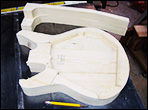 |
The 2x4 Ukulele by John Calkin Calkin says real lutherie can be fun, spontaneous, quick, and cheap. He makes a uke from a lumber-yard 2x4 to drive home the point. |
|||
 |
The Monster in the Attic by Fred Casey When a neighbor brought in “Grampa’s old guitar” for Fred Casey to look at, he got a shock. The guitar was a whopper. Or more properly, a monster. That’s what Lyon & Healy called this very wide guitar. It was pretty well smashed, but soon it was put back in playing condition. Does this guitar make my hips look big? |
|||
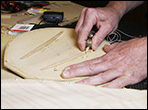 |
Voicing the Modern Mandolin James Condino Condino has developed a clever process by which he can string and play a new mandolin very early in the building process. This makes voicing much more accurate, and it reduces the risk of using experimental materials and bracing patterns considerably. Must see to believe. |
|||
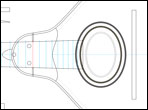 |
GAL Instrument Plan #75: 1926 Gibson “Snakehead” A-Model Mandolin by James Condino It’s a clean, simple classic from the golden era. These are the working man’s mandos that Gibson was making while Lloyd Loar was busy making the fancy ones in the next room. |
|||
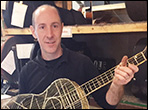 |
Meet the Maker: Dave Collins by Steve Denvir Dave Collins is a rising star on the guitar repair scene. Take a look at a couple of nice jigs he has developed; one for slotting saddles, one for regluing broken headstocks. Interestingly, he is in the same Ann Arbor third-storey shop previously tenanted by Herb David. Dave counts Dan Erlewine and Bryan Galloup among his mentors. |
|||
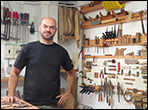 |
The New Generation of Granada Guitar Makers by Lisa Hurlong Lisa Hurlong is an American guitarist who moved to Spain many years ago. The guitar scene in Granada is rich and active. The various guitar makers have deep connections to each other that go back across decades of apprenticeships and partnerships. |
|||
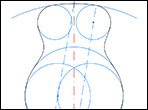 |
Drawing Acoustic Guitar Body Outlines Using Traditional Techniques by R.M. Mottola Grab a piece of paper and a pencil. See if you can find that old plastic triangle. Mottola steps you through the process of actually drawing the outline of an Orchestra Model guitar. Keep a candle handy. If the power goes out you can keep working. |
|||
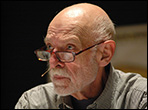 |
In Memoriam: Eugene Clark by Cyndy Burton, Marc Silber, Brian Burns, Michael Gurian, Jay Hargreaves, R.E. Brune, Jeffrey R. Elliott, and Federico Sheppard Eugene Clark (1934-2016) was one of the earliest and most influential pioneers of the American Lutherie Boom. Grateful friends remember his early days in New York, his re-emergence in California, and his final pahase in Tacoma. |
|||
 |
It Worked for Me by Kevin Rielly, Rick Rubin, and Paul Neri A simple adjustable jig brings nut and saddle blanks to accurate dimensions in relative ease. Use firm packing foam sheets to clamp a bridge on a flattop guitar. A tiny digital caliper is made for use in the model-making craft. |
|||
| Lutherie Curmudgeon by John Calkin Calkin’s manifesto of outlaw lutherie. Take it from a guy who has participated in making countless high-end guitars of fine materials: sometimes you gotta grab a hunk of cheap wood and let the chips fall where they may. You will soon have an instrument which offers a satisfying playing experience, for all its uncouth humility. Relax. It’s good for you. |
||||
| Reviews: The American Violin reviewed by Jeff Lee Manthos A trained violin maker takes a thoughtful look at this luxurious picture book cataloging the fine violins of deceased American makers. |
||||
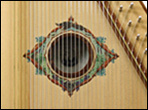 |
Questions by Pete Daigle, Reg Beardsley, Andy Powers, RM Mottola, Mark Dalton, and John Calkin List of guitar finishing services. Make water-slide decals with a laser printer. A description of how one could make traditional water-slide decals in the old-school way, that is, by silk screening. What is torrified wood and what are its good qualities? Maybe you can make something similar to torrified wood in a home oven. I said maybe. Don’t blame the GAL if you make a stinking mess. Or worse. |
|||
Web Extras |
||||
| Top of Page | ||||

